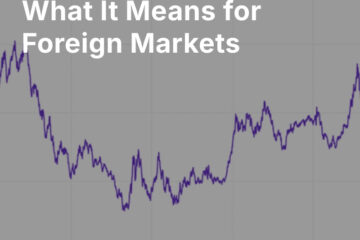Japan: The Market Still Driven by the Yen and Monetary Policy
Since last year’s elections that brought Shinzo Abe to power in Japan, analysts have been consistent in one message: ultimately, the success or failure of Abe’s attempt to bring Japan back from its long stagnation depends on his ability to enact structural reforms. The structural reforms are his “third arrow” (the first two were accommodative monetary policy, and fiscal stimulus). But the “third arrow” threatens to hit some political landmines — by challenging the economic and political beneficiaries of protectionism and inflexible labor markets.
After landing the first two arrows (which Abe accomplished thanks to enthusiastic compliance by the Bank of Japan, and a coalition majority in Japan’s parliament), observers have been disappointed that the deeper reforms Abe outlined have been slow to appear.
Disappointed, perhaps, but not surprised. Getting the Bank of Japan on board with unprecedented monetary easing was easy. Getting fiscal stimulus through a compliant Diet was relatively easy. However, challenging some of the entrenched interests that have long been supported by his own party — that won’t be so easy. It’s a quandary that’s been faced by many Japanese would-be reformers over the years.
Shinzo Abe Discovers the Limits of Cajoling
Source: Japan Daily Press
Japanese Equities Rallied, Then Paused
The Nikkei responded vigorously to Abe’s program early this year — but its outperformance among developed markets was just in the year’s first few months. Since then, until recently, the Nikkei has been chopping around in a sideways manner. As the chart below shows, the market’s movements since long before the initiation of Abe’s reforms has very closely tracked the Japanese yen’s movements against the dollar.
This makes sense for two reasons. First, the explicit intention of the government and the Bank of Japan is to generate inflation. That is slowly pushing Japanese savers to reallocate assets from safer to riskier investments. This process seems to be gaining some institutional traction, with new tax-incentivized schemes for individual pension saving. The second reason is that a weaker yen has historically been a strong positive for Japanese exporters, making their goods cheap for foreign buyers. A weaker yen has been the implicit goal of monetary policy under Bank of Japan chief Haruhiko Kuroda. The world’s other central banks have tolerated this attempt to push the yen lower, since their governments recognize the vitality that a revived Japan would transmit to the rest of the global economy.
The Japan Trade Is Still A Yen Trade
Source: Federal Reserve Bank of New York
Is It Working?
Analysts have feared that the Nikkei’s rise and pause are confirmation that monetary and fiscal stimulus alone can’t do the job. They believe that Japan will not be able to revive its economy unless Abe can deliver something substantive on the structural reform front, and that seems increasingly difficult — if it happens at all.
Annualized GDP growth rose this year, and then fell while the Nikkei’s rally stalled:
But there’s evidence that even if long-term reforms prove elusive, the current rally may still have legs.
Equities Resume Their Rise
The market’s upward movement seems to be resuming, and it’s being driven by the same forces that drove equities higher in late 2012 and earlier this year. Now, the market is pricing in the anticipated effects of Federal Reserve policy. The eventual reduction of the U.S. Fed’s monetary stimulus will mean fewer dollars chasing yen, which implies further weakening of Japan’s currency.
Further, although the U.S. Fed has been anxiously discussing and preparing for the tapering of QE, Japan’s central bank is doing no such thing — in fact, its governor has stated repeatedly that the Bank of Japan stands ready to increase its easing if necessary to achieve its 2 percent inflation target.
Also, an independent commission recently recommended that Japan’s huge public pension funds re-weight their allocations more towards equities. If the Diet approves this in the case of the Government Pension Investment Fund (GPIF), with about $1.2 trillion in assets, the effect could be profound. This is also still just the tip of the iceberg, with a lot more “mattress money” held by individual Japanese savers waiting to be pushed into the market by inflation fears.
Japanese are not the only buyers — Japan’s Ministry of Finance released data showing buying by non-Japanese investors recently returned to levels last seen in April 2013.
By many metrics, Japan’s market is not overbought. The average price-to-earnings multiple for the Topix, a broader Japanese equity index, stands at about 16.5 — versus about 18 for the S & P 500. This implies there is room for Japanese equities to rise further — although their long-term valuation will remain constrained if Abe can’t deliver reforms that help Japanese corporations become more competitive.
Abe may or may not succeed in cajoling his colleagues in the Liberal Democratic Party to embrace labor market and immigration reforms, free trade treaties, and the curbing of protectionist tariffs. But for now, the forces already at work could continue to push Japanese markets higher. As we near the end of the Japanese fiscal year in March, Japanese investors are selling underperforming stocks and buying those that have performed well. We continue to be bullish on Japan — but remember to hedge your yen position.






